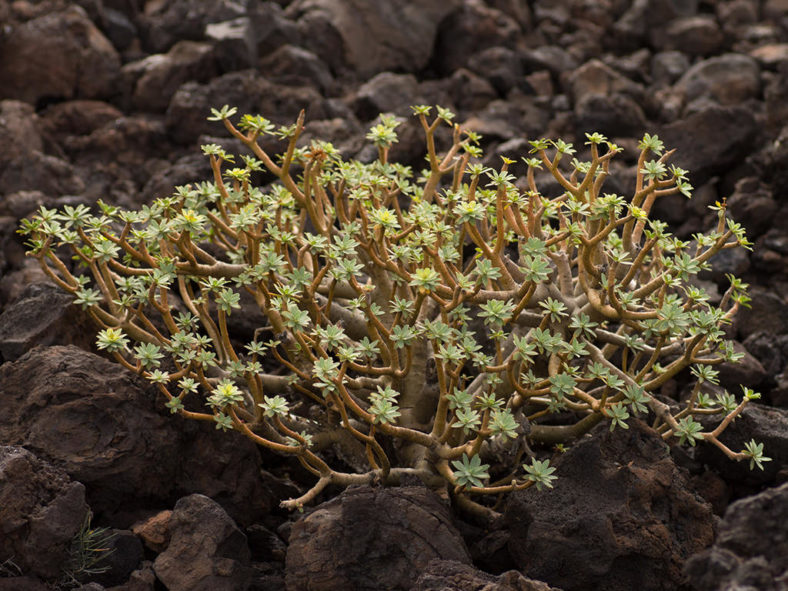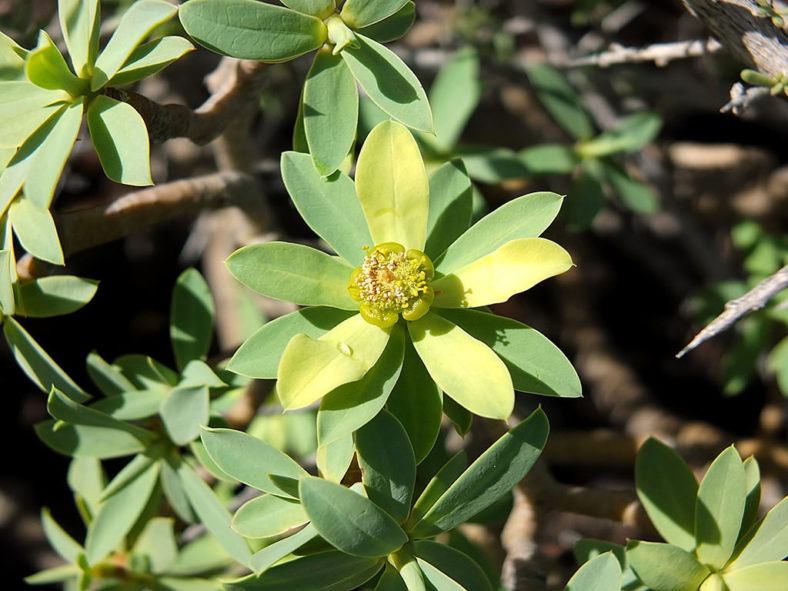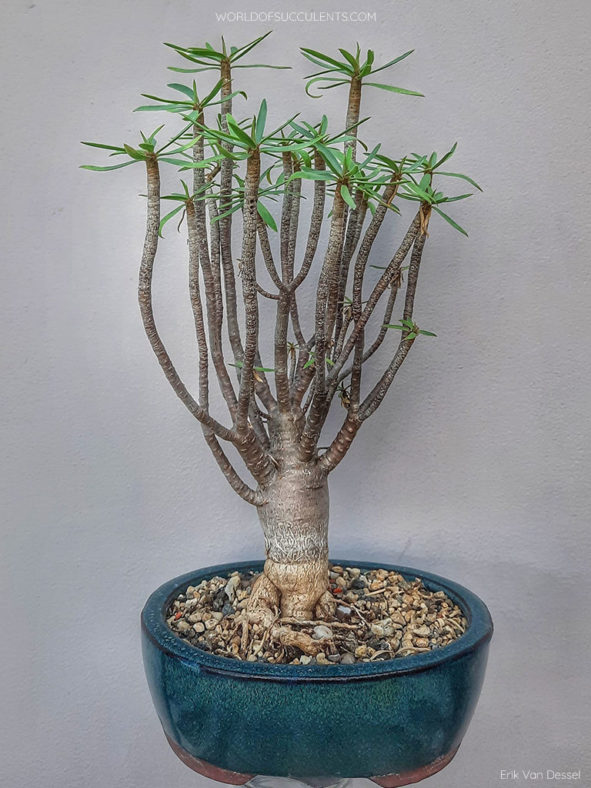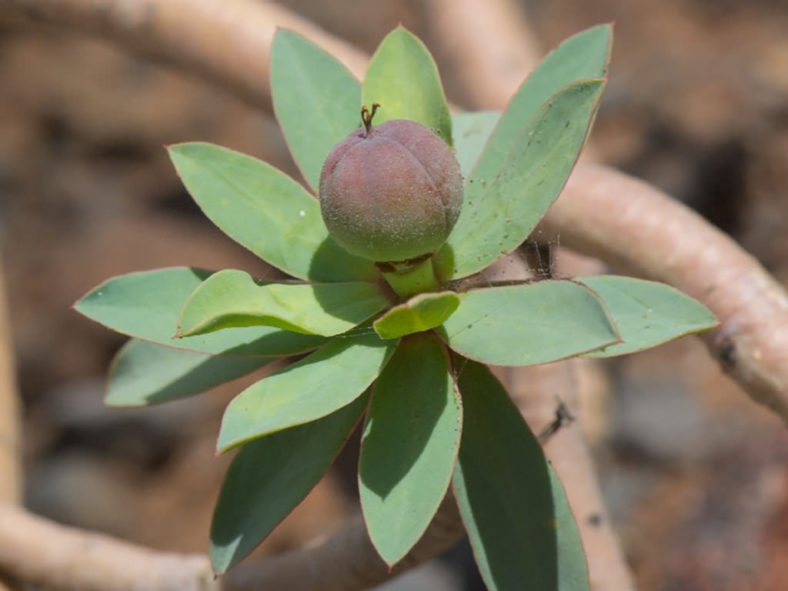Scientific Name
Euphorbia balsamifera Aiton
Common Name(s)
Balsam Spurge
Synonym(s)
Euphorbia balsamifera subsp. balsamifera, Tithymalus balsamifer
Scientific Classification
Family: Euphorbiaceae
Subfamily: Euphorbioideae
Tribe: Euphorbieae
Subtribe: Euphorbiinae
Genus: Euphorbia
Etymology
The specific epithet "balsamifera (bal-sam-EE-fer-uh)" means "balsam-bearing," referring to the aromatics of the tree.
Origin
The native range of Euphorbia balsamifera extends from the Canary Islands across North Africa to Somalia and Saudi Arabia, and Oman in Asia. It grows on rocky ground and sandy dunes in plains, among other succulent plants.
Description
Euphorbia balsamifera is a dichotomously branching succulent shrub with pale grey branches and green to glaucous leaves arranged in whorls at the branch tips. It can grow up to 10 feet (3 m) tall. The branches are semi-succulent, smooth with transverse leaf scars, and can reach up to 0.4 inches (1 cm) in diameter. The leaves are linear–lanceolate to obovate, measuring up to 3.2 inches (8 cm) long and 0.3 inches (0.8 cm) wide.
The flowers appear from winter to summer. The inflorescences are terminal cymes, usually reduced to solitary cyathia with a very small stalk. The bracts are similar to the leaves. The cyathium is yellow and can reach up to 0.25 inches (0.6 cm) in diameter. The fruits are smooth or hairy, shallowly 3-lobed capsules containing grey seeds. They are initially green but become reddish-green at maturity.

How to Grow and Care for Euphorbia balsamifera
Light: This succulent loves the sun. Place your indoor E. balsamifera in a sunny window. You can also place the pot on the balcony or in the garden from spring to fall. Increase sun exposure gradually to prevent sunburn.
Soil: E. balsamifera requires well-drained soil. You can use a commercial potting mix formulated for succulents or make your own.
Temperature: High summer temperatures are not a problem, but low winter temperatures can damage or kill your plant. E. balsamifera can withstand temperatures as low as 30 °F (-1.1 °C). USDA Plant Hardiness Zones 10a to 11b, 30 to 50 °F (-1.1 to 10 °C).
Watering: From spring to fall, water when the top inch (2.5 cm) of soil feels dry. Reduce watering in winter. Give it just enough water to prevent wilting. In the warm season, the best time of day to water your E. balsamifera is the evening.
Fertilizing: Potted plants need regular feeding. Apply a balanced fertilizer in a 10-10-10 NPK formulation diluted to 1/4 strength weekly during the growing season.
Repotting: E. balsamifera will benefit from repotting but does not need to be repotted yearly. When your plant outgrows its pot, it is time to repot it in a larger pot and give it a fresh potting mix. Repotting is best done in early spring, at the beginning of the growing season. Wear gloves, protective clothing, and appropriate eye protection when repotting this succulent.
Propagation: The easiest and fastest method to propagate this plant is by stem cuttings. It can also be grown from seeds, but it can be difficult for seeds to germinate. The best time to take cuttings is in spring or summer. Sow the seeds in spring.
Learn more at How to Grow and Care for Euphorbia.
Toxicity of Euphorbia balsamifera
E. balsamifera produces a toxic white milky sap that may cause burns or irritation if it comes into contact with the skin or eyes. Therefore, keeping this plant away from children and pets is best.
Links
- Back to genus Euphorbia
- Succupedia: Browse succulents by Scientific Name, Common Name, Genus, Family, USDA Hardiness Zone, Origin, or cacti by Genus
Photo Gallery
Click on a photo to see a larger version.


